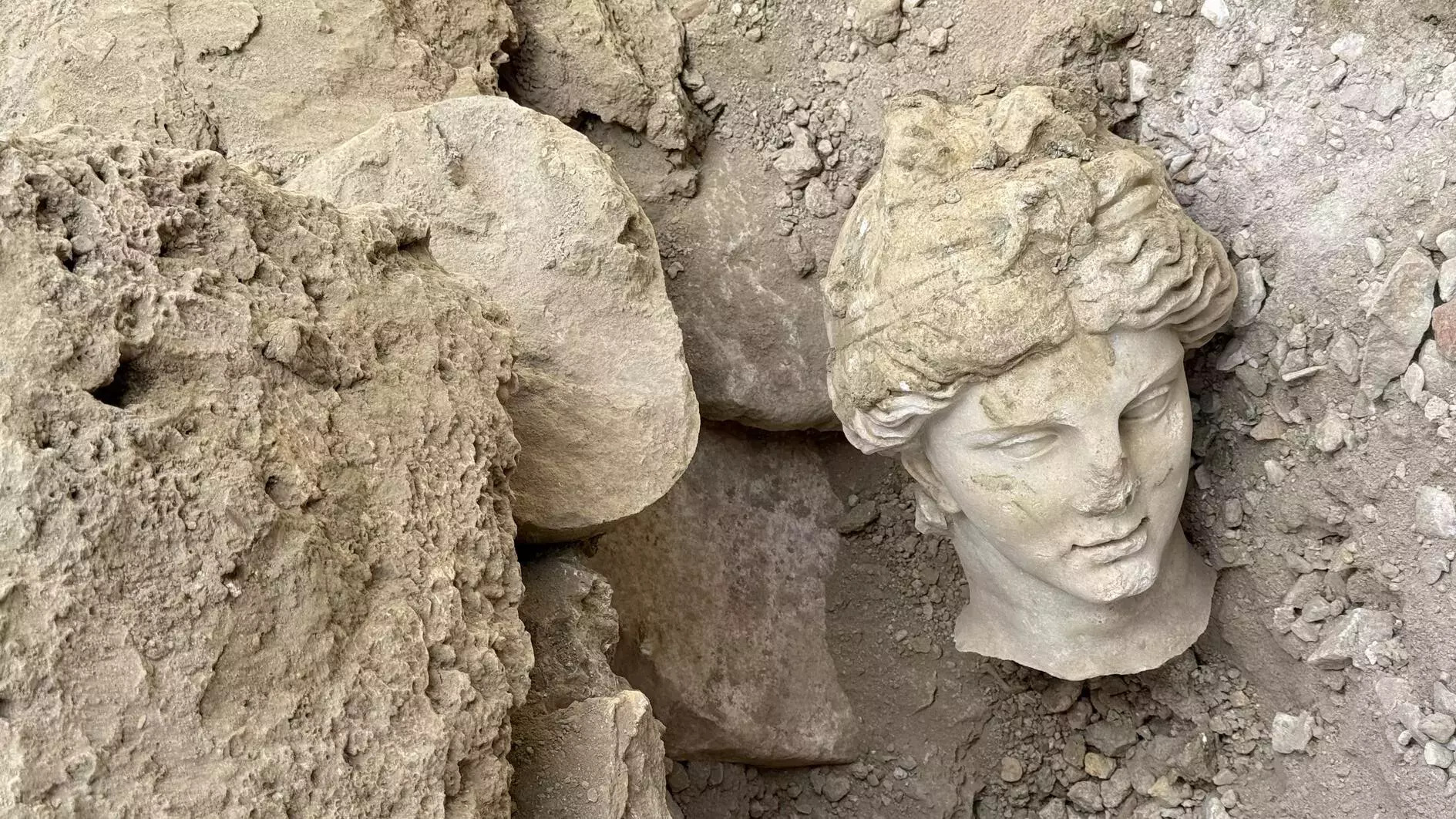During ongoing excavations in the ancient city of Laodicea, located in the western province of Denizli and listed on the UNESCO World Heritage Tentative List, the statue head of Hygieia, daughter of Asclepius, the god of medicine in Greek and Roman mythology, has been unearthed.
Laodicea’s history dates back to 5500 B.C. and it is home to one of the seven churches mentioned in the Bible.
This year, excavations in the Western Theater area uncovered a statue of Asclepius. Following this discovery, the statue head of his daughter, Hygieia, was found on May 20, generating significant excitement at the excavation site. Efforts to unearth the statue’s body are ongoing.
Professor Celal Şimşek, head of the excavations, noted that a key focus of their work is the Western Theater stage structure, which dates back to the Hellenistic Period in the second century B.C.
He emphasized the significance of the Asclepius and Hygieia statues, stating, “Both statues were created in the late Hellenistic-early Augustus Period in the classical style. These statues of the god and goddess of health highlight the presence of the Herophileion medical school in Laodicea and the ancient writer Strabo, one of the notable doctors trained there. The statues exhibit very fine craftsmanship and high artistic quality.”









